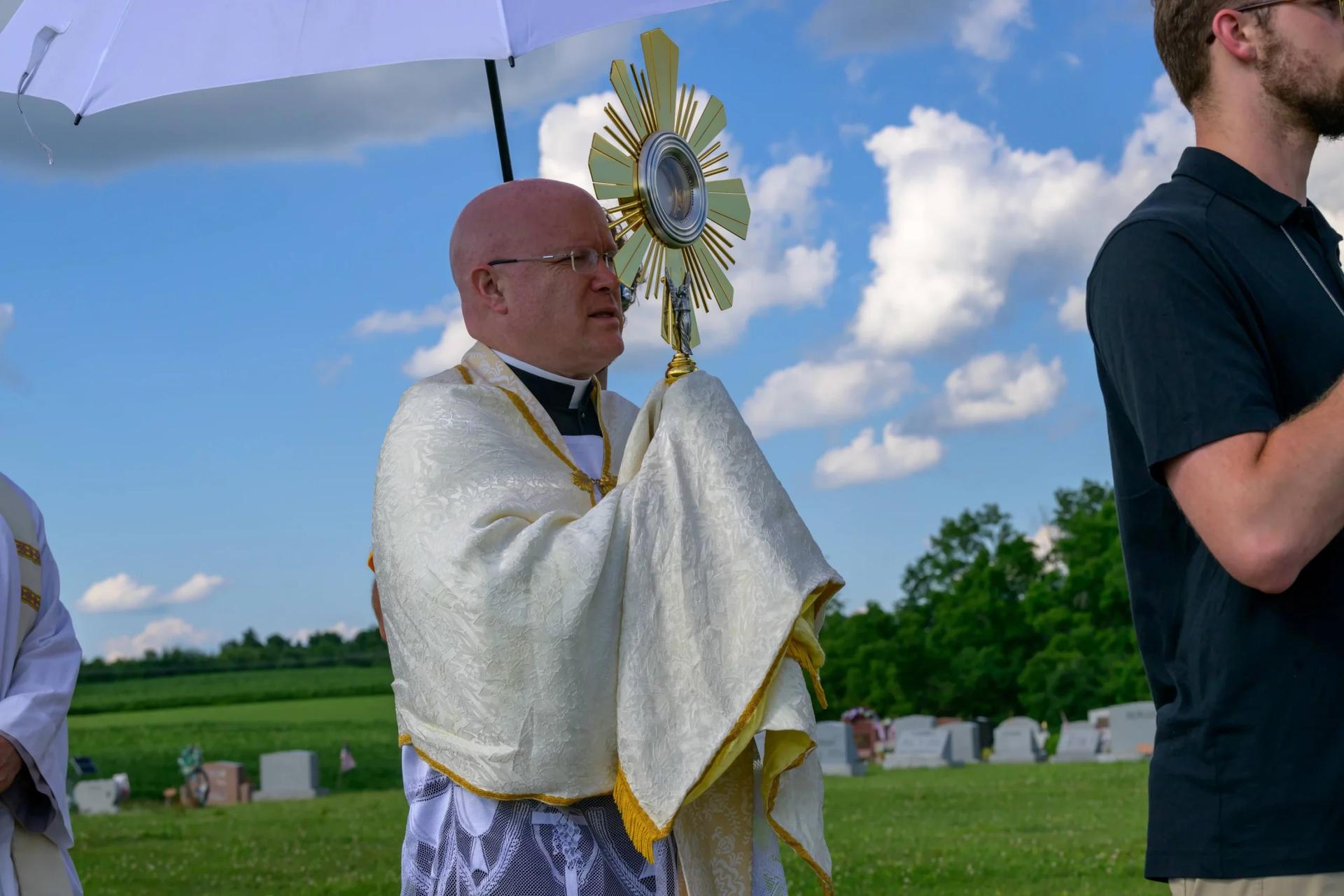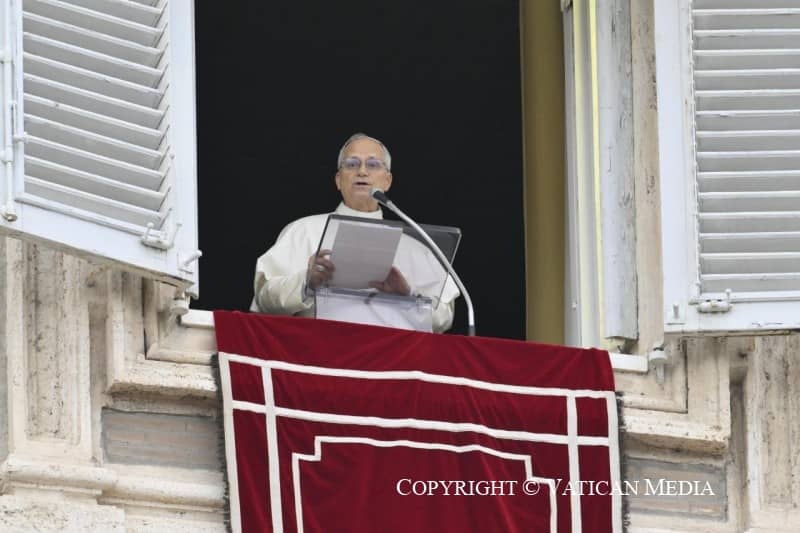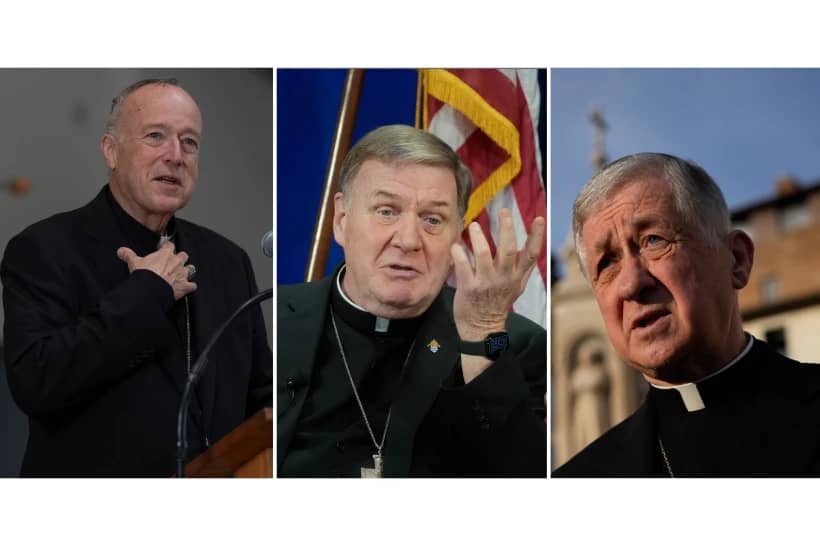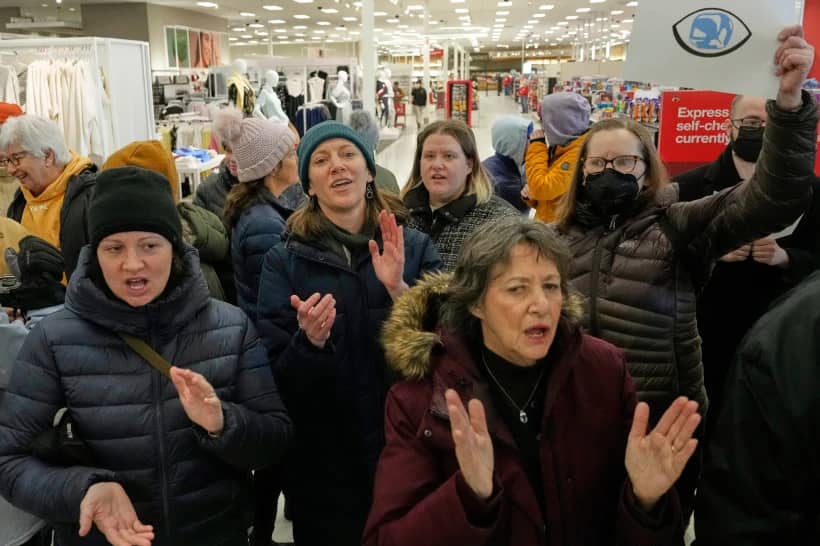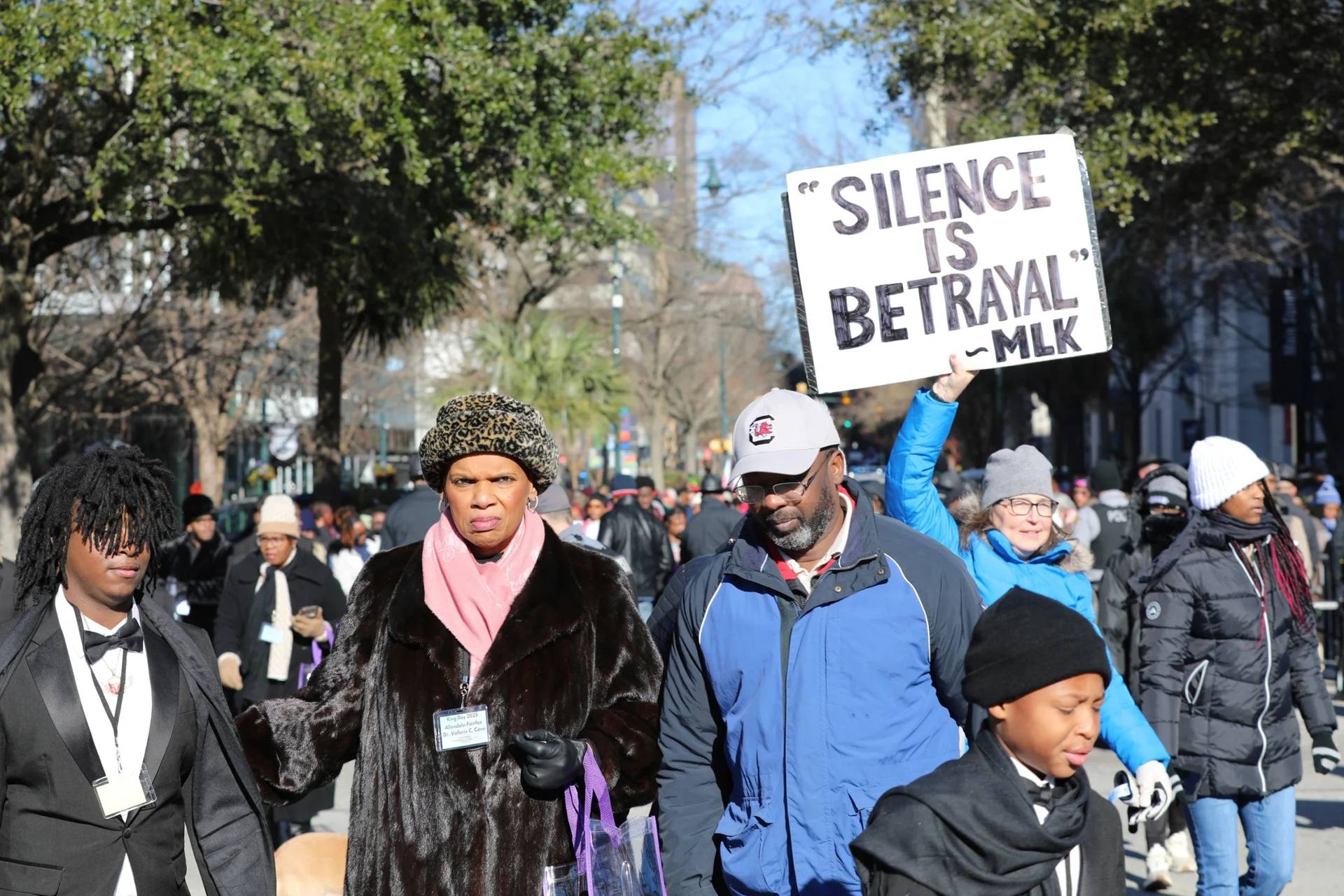NEW YORK – When Father Roger Landry carried a gold starburst-style monstrance in front of his face throughout the National Eucharistic Pilgrimage, he said the way the consecrated host was situated left a sliver of glass before his eyes, acting as a window to look at everything through the lens of the Eucharist.
Through that perspective, Landry, who was the only priest to walk the entirety of the pilgrimage’s eastern route, said he witnessed first-hand the impact of the journey participants had undertaken.
He observed an older woman amputee lifted out of her wheelchair by a family member so she could kneel on the pavement as the Eucharist passed. He saw parents pulling their children in wagons and people walking with canes for stretches as long as 18 miles. He saw Catholics and non-Catholics alike moved by the presence of the Eucharist.
“The hopes I had were that we’d see miracles along the way, that people would come out with great enthusiasm for Mass, for adoration, and particularly for the processions, which was the main part of the eucharistic pilgrimage,” Landry recently told Crux. “My hopes were exceeded.”
The eastern route of the National Eucharistic Pilgrimage, which Landry completed alongside six perpetual pilgrims, traveled from Hartford to Indianapolis from May 17-July 16. They arrived in Indianapolis just in time for the National Eucharistic Congress — the first event of its kind in more than 80 years — as part of the 60,000 people who attended.
Landry, the Catholic chaplain at Columbia University, said what he witnessed at the congress from July 17-21 was equally as powerful. He described the gathering as a chance for Catholics to escape “the polarizations that exist in our country, both political and ecclesiastical.”
“Catholics worshiped together,” Landry said. “The experience of genuine communion in Indianapolis was unforgettable and striking.”
The pilgrimage and the congress were part of the United States Conference of Catholic Bishops National Eucharistic Revival initiative. Now in its final year, dubbed “The Year of Mission,” the expectation and hope is that Catholics nationwide will carry a missionary spirit in their everyday lives and, as a result, inspire people to live out and join the faith.
The question, though, is whether or not the revival initiative has reached those on the margins — non-Catholics, disaffiliated Catholics, etc. — and what needs to happen in this year of mission to maintain the momentum created by the pilgrimage and congress.
From Landry’s perspective, the key is making those extraordinary events ordinary.
“Both the pilgrimage aspect and the congress aspect are supposed to be ordinary and routine, not extraordinary and spectacular,” Landry said. “I’m super grateful for the spectacular things that happened in 2024, but moving ahead, part of the mission is to live the ordinary aspects of those two realities.”
Landry explained that he believes Catholics need to come together with the Lord in Mass and adoration and then “take the Lord out in the streets” and “become the monstrances receiving Jesus Christ outside and everywhere we go.”
“It’s essentially a Corpus Christi procession because we’re carrying the Lord within,” Landry said. “That’s what has to be stressed at this phase.”
What follows is more from Crux’s conversation with Landry (which has been edited for clarity and length), beginning with what he believes needs to happen in this “Year of Mission” to maintain the momentum from the eucharistic pilgrimage and congress.
Crux: What was your experience regarding who the eucharistic revival has reached? Did it reach non-Catholics, those who may not fully believe in the Eucharist, or people disaffiliated with the faith?
Landry: Every part of the church, beginning with the bishops, priests, and religious, needs to be revived. If we’re not on fire for the Eucharist, nobody else is going to catch that flame. Then, we have to go to those Catholics who are already on fire.
The revival isn’t going to happen unless the upgrades come from those who are already practicing the faith. Should the revival get to those who are unaware of the treasure that we have? Absolutely. But there’s a sequence for us to get there. If we’re going to go to those people first, it’s not going to be an effective strategy. Jesus sent his first apostles out to the lost sheep of the house of Israel, not to the ends of the earth. There are a lot of people who are still in the house of the church who are a little lost when it comes to Jesus’ real presence, so we need to begin there before we’re able to effectively launch out.
We had incredible stewards along our route of those people who aren’t Catholic, had given up the practice of the faith decades ago, who saw us, were very touched by us, and then decided to join us.
How does the momentum from the pilgrimage and congress stay alive in this year of mission when there isn’t a specific event tied to what’s happening now?
One of the things I’ve tried to stress is that the spectacular aspects of the Eucharistic revival — the pilgrimage and the congress — are not meant to be merely extraordinary. They’re meant to be ordinary. Congress comes from the Latin word congredī, which means to come together. And we have a daily eucharistic congress every time Mass is celebrated.
That’s the way the work of what happened with the 60,000 in Indianapolis is supposed to happen. We need to help everybody understand that, and there’s a huge burden on bishops, priests, and deacons to be able to preach this effectively.
It’s important that every cleric recognize the eucharistic dimension of his calling and live his eucharistic faith in a contagious way. We have 17,000 parishes in the U.S., and 800 have perpetual Eucharistic adoration. Wouldn’t it be great if that number could be multiplied by five or tenfold? That’s what’s needed for the eucharistic revival to take place.
There’s a lot of enthusiasm for it. Lay people in many places are asking for it, but it’s going to require generosity of leadership on the part of the fewer clergy that we have. If we’re going to experience a true eucharistic revival, it’s going to be led by those who have the awesome privilege to be able to hold Jesus in their hands.
You don’t think it’s not about recreating the extraordinary, but about making the ordinary more prevalent?
That’s what the revival has always been about. The spectacular events do help because we’re able to see that we’re not alone. Those types of things are always helpful when you’re able to come together and thank God and see that many others share your zeal and your values. But the real revival is going to happen one-on-one in chapels and churches all across the country, and it’s going to happen by the way we take Mass seriously.
When we go to Mass, we encounter God. If Taylor Swift were coming into any one of those 17,000 churches on Sunday, that church would be a mob scene, and everybody knows it. And Taylor Swift is one day going to die and be judged by the one who is actually in those churches, Jesus himself. But do Catholics take Jesus Christ more seriously than they do Taylor Swift? That’s a big question. I hope so. I pray so.
I’m working like crazy for that to take place, but it’s going to require conversion and the prioritization of Jesus. When people ask me what’s the one thing you need to do coming out of the congress and the revival, I say, “Treat God as God. Act according to our faith.” Because if we really believe that the Eucharist is Jesus Christ, the eternal son of God, and we love him sincerely, we’re going to want to spend time with him. We’re not going to come to Mass only when we can fit it in or as a moral duty. We’re going to go because we love him.
Follow John Lavenburg on X: @johnlavenburg
